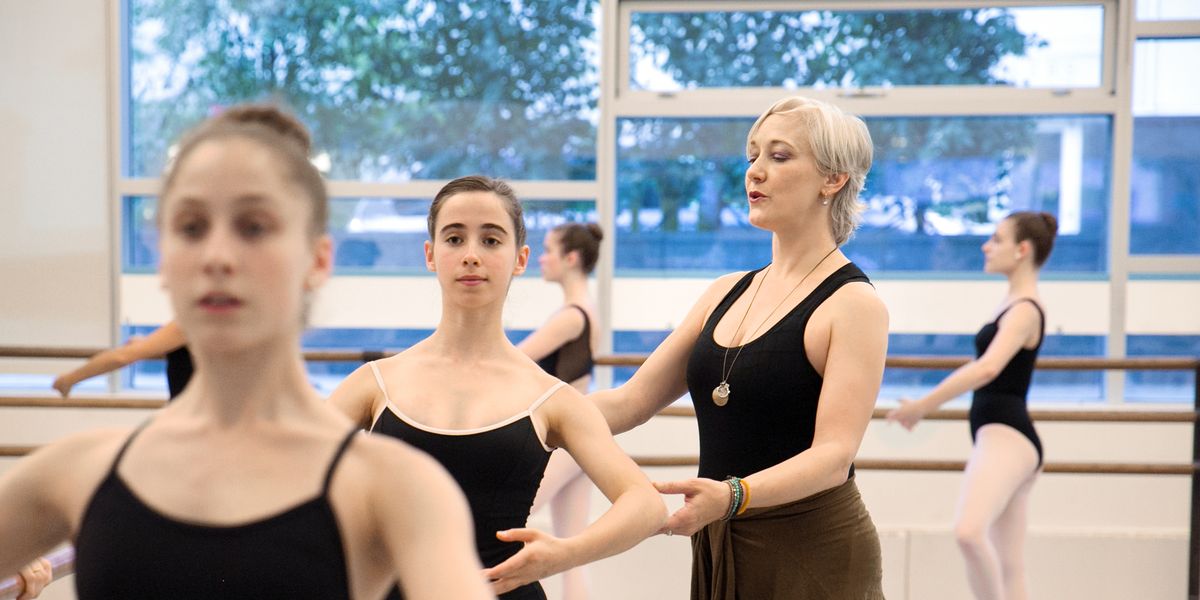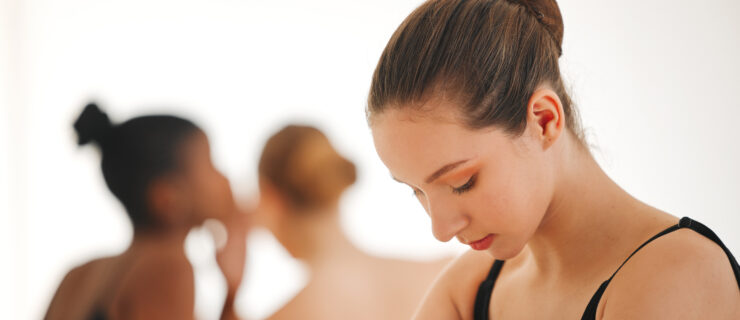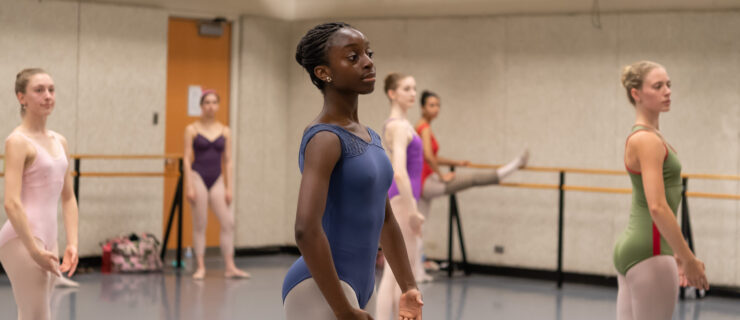Am I On Time in My Training?
Deep down, Dara Oda knew she wasn’t ready. Despite 15 years of solid training at the School of DanceWest Ballet near her hometown outside of Chicago, by the end of high school she realized she still didn’t have the technique or maturity for a realistic shot in a company audition. “It was terrifying,” Oda recalls. “I was unsure of where I stood in terms of my dancing abilities, but I didn’t really know where, or how, to improve.” She did find a path to her career—she’s now a member of Texas Ballet Theater—but she wishes she’d figured out that she was behind a lot sooner. “I’d had good training, but was oblivious to the fact that I needed to be doing so much more than I was.”
Many students fear being in a situation like Oda’s: arriving at a company audition only to discover that they haven’t progressed technically and artistically as far as their peers. And with an endless supply of ballet prodigies online and in competitions, it’s hard not to worry that you’re not advancing fast enough. How can you make sure you’re on track to meet your professional goals?
Training Benchmarks
There are no firm rules, but most teachers agree that students need to meet certain technical and artistic benchmarks en route to a career, and getting started early is a definite advantage. Deborah Wingert, who is head faculty at Manhattan Youth Ballet and teaches at The Ailey School’s Professional Division and Ailey Extension in New York City, says that between 14 and 16, professionally aspiring dancers should have “base knowledge” under their belts: dancing on pointe, double pirouettes en dedans and en dehors, and an understanding of battu in petit allégro, for example.
Michelle Lees, principal and artistic director of Maryland Youth Ballet, agrees but adds that students behind the curve can make up for a late start or poor early training if they have enough natural coordination, physicality, determination and focus. The dancer’s end goal influences the pace of their progress, too: A college conservatory program gives an extra four years of intense study and performance experience, and a contemporary or modern career path generally allows for later development.
 Michelle Lees teaching class at Maryland Youth Ballet. Photo by Alyce Jenkins, Courtesy MYB.
Michelle Lees teaching class at Maryland Youth Ballet. Photo by Alyce Jenkins, Courtesy MYB.
Assessing Your Progress
Often, summer intensive auditions are the only way that students from smaller or regional schools can get a realistic assessment of where they stand—and if they’re getting the training they need. “If, at an audition, a student sees others their own age doing steps and combinations they haven’t learned or aren’t secure in, that’s a sign their training is lacking,” says Lees. While acceptance into a major school is a positive indicator, Lees notes that technique is not the only way to measure a dancer’s development. “Students shouldn’t assess their abilities by comparing themselves to the prodigies they see online. Social media and competitions tend to focus on ‘tricks,’ and students are often swayed by that. But there’s so much more to dance—artistry, musicality, movement quality—and dancers need to believe in what they can be.”
Despite the tendency to highlight technique over long-term artistic potential, competitions and festivals can help dancers gauge their progress, while also providing outside feedback from judges and teachers. Oda’s studio performed at Regional Dance America each year, giving her a chance to be among other dancers her age. “It was a good opportunity to prepare myself for a bit of healthy competition and measure my caliber, while taking advantage of all the performances, classes and workshops,” she says. Wingert agrees that competitions are best used for the learning experience and exposure. “Especially if you don’t perform a lot at your school, it’s a great way to get some extra work: You have to be coached and put in extra training sessions. It’s also eye-opening, even if you do well or win an award, to compare yourself to other dancers who may be better than you.”
 Dara Oda in CHristopher Wheeldon’s “DGV.” Photo by Amitava Sarkar, Courtesy TBT.
Dara Oda in CHristopher Wheeldon’s “DGV.” Photo by Amitava Sarkar, Courtesy TBT.
How to Catch Up
If signs indicate you’re behind others your age, consider ramping up your training regimen. If you’re not going full-time to a professionally affiliated school, adding intensity is imperative. “Any and all extra training would help,” says Lees. “Ideally, visit nearby cities for open classes and workshops with great teachers.” Take advantage of any classes offered by a visiting master teacher, too. Websites like Ballet in Form (balletinform.com) and Progressing Ballet Technique (pbt.dance) offer training tips from a variety of renowned instructors.
If you decide to change schools altogether, shop around carefully. Research where the dancers you admire have trained, and remember that larger schools are not necessarily better. Wingert says to look for a school that gives personal attention to each student, has a reasonable balance of rehearsal, performance and class time, and clearly outlines what is taught at each level. “It must be curriculum-based, so students and parents understand what is covered each year, and have regular evaluations to discuss how they are progressing.”
There’s no reason to panic if you’re behind your peers, but avoid getting complacent. Regularly redefine your goals and assess whether you’re doing everything you can to move steadily towards them. Oda made up for lost time by enrolling in an intensive dance program at Belhaven University, but she regrets not going to more summer programs during high school. “Surround yourself with dancers who have the same goals as you,” she advises. “I was passionate but didn’t know what was required because the people around me weren’t trying to do the same thing.”






